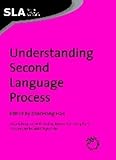Understanding Second Language Process / ed. by ZhaoHong Han.
Material type: TextSeries: Second Language AcquisitionPublisher: Bristol ; Blue Ridge Summit : Multilingual Matters, [2007]Copyright date: ©2007Description: 1 online resource (232 p.)Content type:
TextSeries: Second Language AcquisitionPublisher: Bristol ; Blue Ridge Summit : Multilingual Matters, [2007]Copyright date: ©2007Description: 1 online resource (232 p.)Content type: - 9781847690142
- 9781847690159
- 418 22
- P118.2 .U53 2008eb
- online - DeGruyter
| Item type | Current library | Call number | URL | Status | Notes | Barcode | |
|---|---|---|---|---|---|---|---|
 eBook
eBook
|
Biblioteca "Angelicum" Pont. Univ. S.Tommaso d'Aquino Nuvola online | online - DeGruyter (Browse shelf(Opens below)) | Online access | Not for loan (Accesso limitato) | Accesso per gli utenti autorizzati / Access for authorized users | (dgr)9781847690159 |
Frontmatter -- Contents -- The Contributors -- Preface -- 1. Revisiting the Role of Consciousness with MOGUL -- 2. Multi-Competence: Black Hole or Wormhole for Second Language Acquisition Research? -- 3. Transfer Appropriate Processing as a Model for Classroom Second Language Acquisition -- 4. On the Role of Meaning in Focus on Form -- 5. The Efficacy of Visual Input Enhancement in Teaching Deaf Learners of L2 English -- 6. Learner Spontaneous Attention in L2 Input Processing: An Exploratory Study -- 7. Working Memory and L2 Processing of Redundant Grammatical Forms -- 8. L2 Learners’ Interpretation of Operator-Variable Binding in VP Ellipsis -- 9. Metasyntactic Ability in L2: An Investigation of Task Demand -- 10. Prosody Acquisition by Japanese Learners -- 11. Recognition and Production of Formulas in L2 Pragmatics -- References -- Index
restricted access online access with authorization star
http://purl.org/coar/access_right/c_16ec
This book assembles 11 analytical and empirical studies on the process of second language acquisition, probing a wide array of issues, from transfer appropriate processing to L2 default processing strategies, among hearing or deaf learners of a variety of target languages including English, Japanese, Chinese, Korean, French, Spanish, and American Sign Language. Although instruction per se is not the focus of this volume, the chapters are written with instructed learners in mind, and hence offer valuable insights for both second and foreign language researchers and practitioners.
Mode of access: Internet via World Wide Web.
In English.
Description based on online resource; title from PDF title page (publisher's Web site, viewed 01. Dez 2022)


